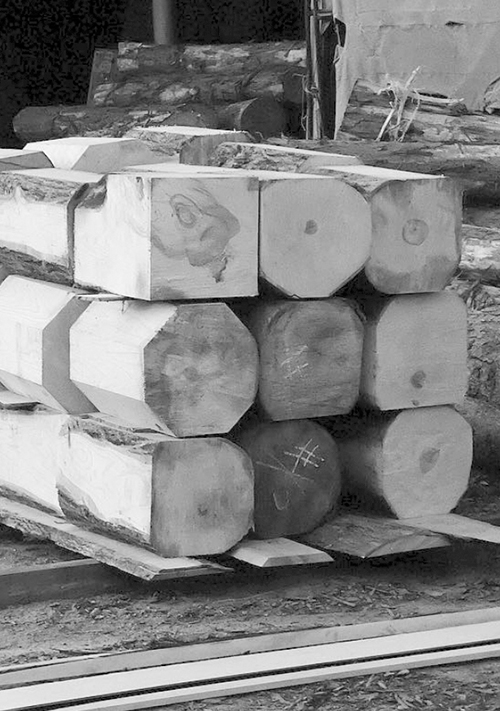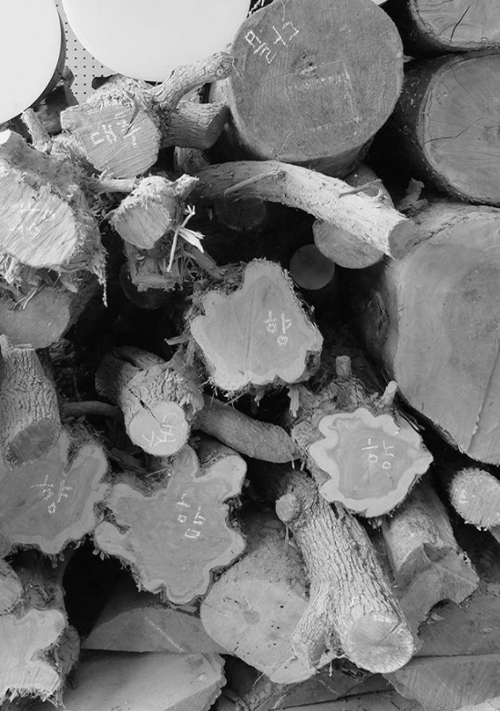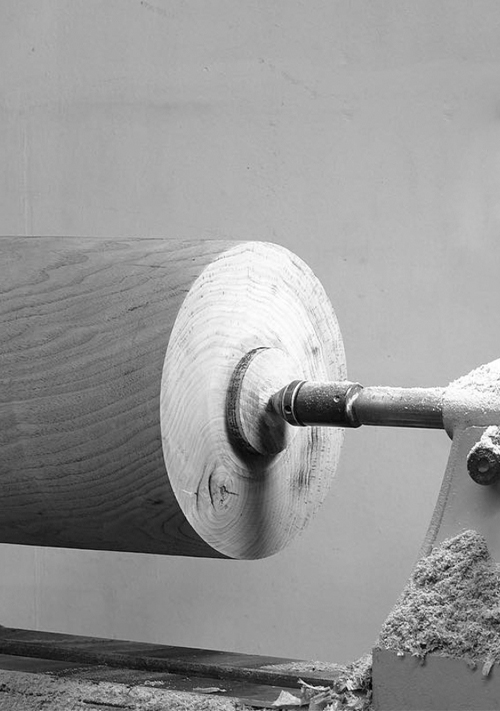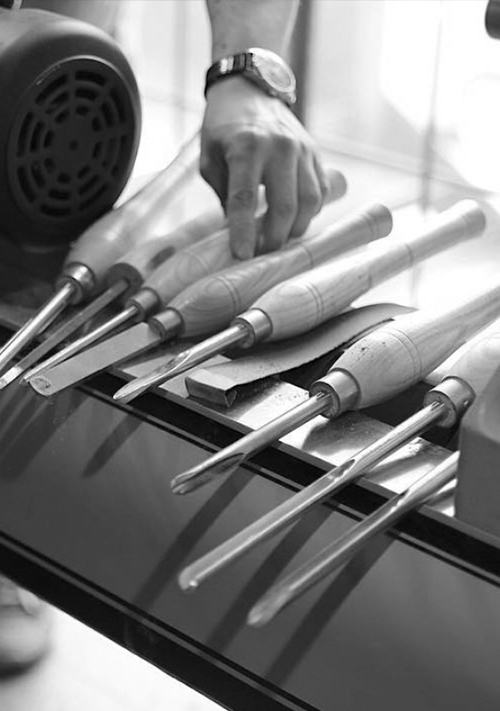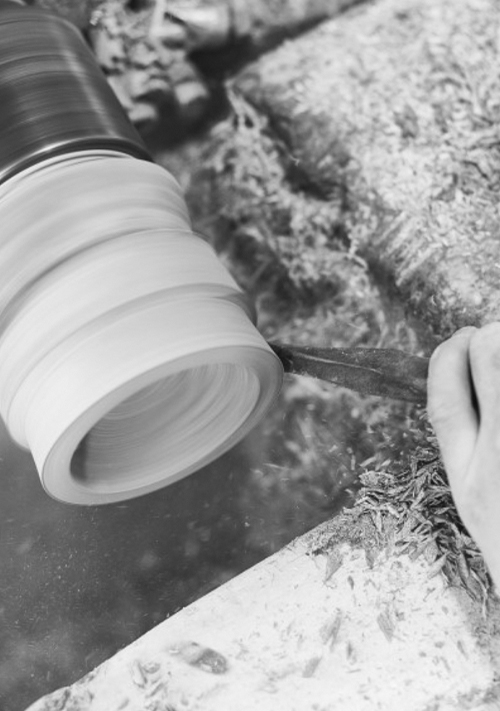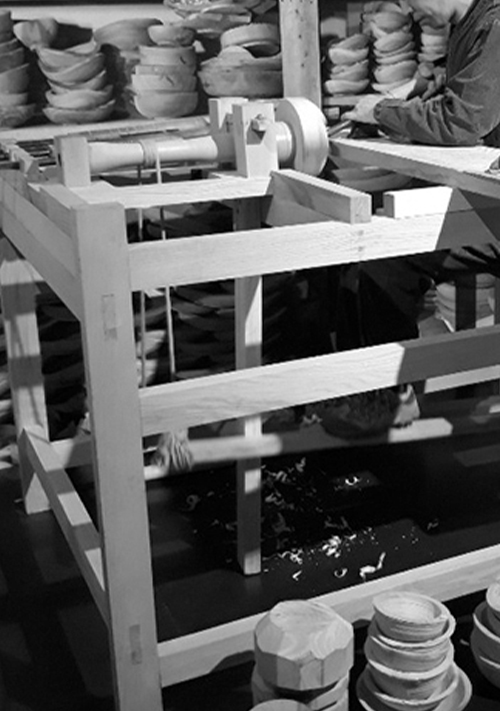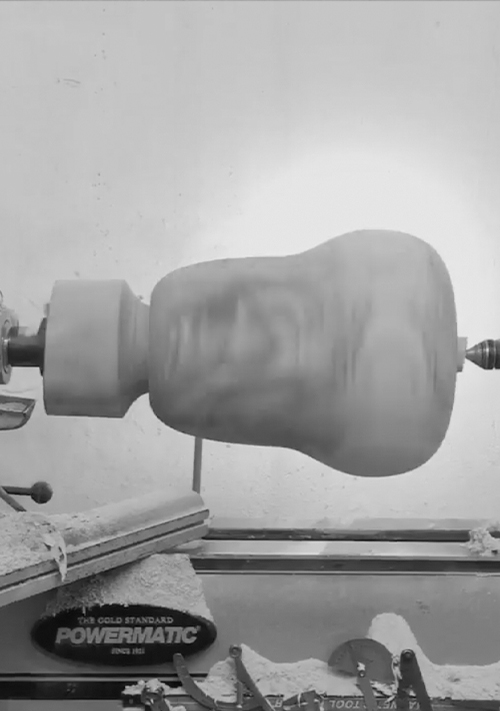Studies in the UK opened Jungjoo Im’s eyes to the world of international design, but when he returned to Seoul
his focus became on creating products that had a universal appeal, yet referenced local tradition. His work with
Korean timber in
the creation of his decorative objects is experimental, but tends to emphasise hand-shaped craft, drawing upon
the traditional wood turning technique of
craftsmanship. His unique
approach is
highlighted in his noneloquent project, which was recently displayed at the
, and challenged the notion of conventional form in
creating designs that
were deliberately devoid of function. His work reflects a mood among contemporary Korean designers challenging
the norms of their industry, which typically makes objects purely for function.
Australian industrial designer Henry Wilson’s work, which includes product
commissions from skincare company
Aesop and furniture for
high-end Sydney restaurants, similarly pays attention to the importance of form. The sand-casted bronze
objects he’s become known for all marked individually by the tactile, changeable nature of the rich material
and the sculptural quality
of his designs. Yet, despite being beautiful pieces to behold, Wilson’s work tends to always serve a
democratic utility, blurring the lines between function and ornament.
Wilson and
Im speak about the making
techniques behind their meticulously produced works and the similarities and differences in their creative
processes.
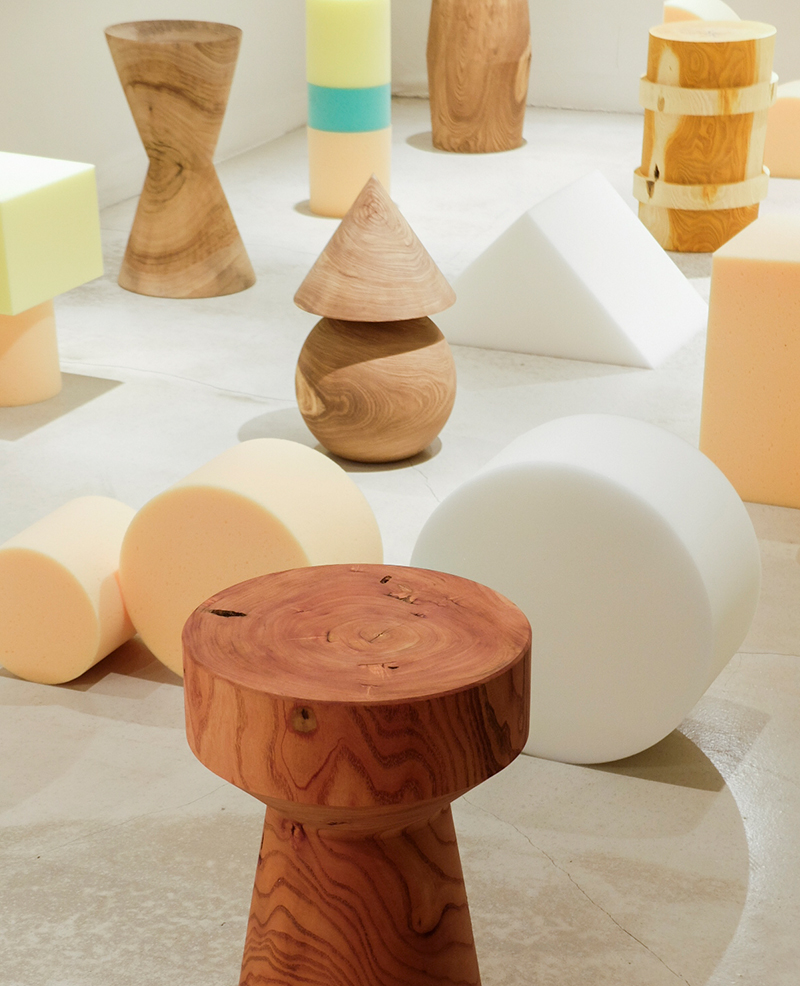 1.
1.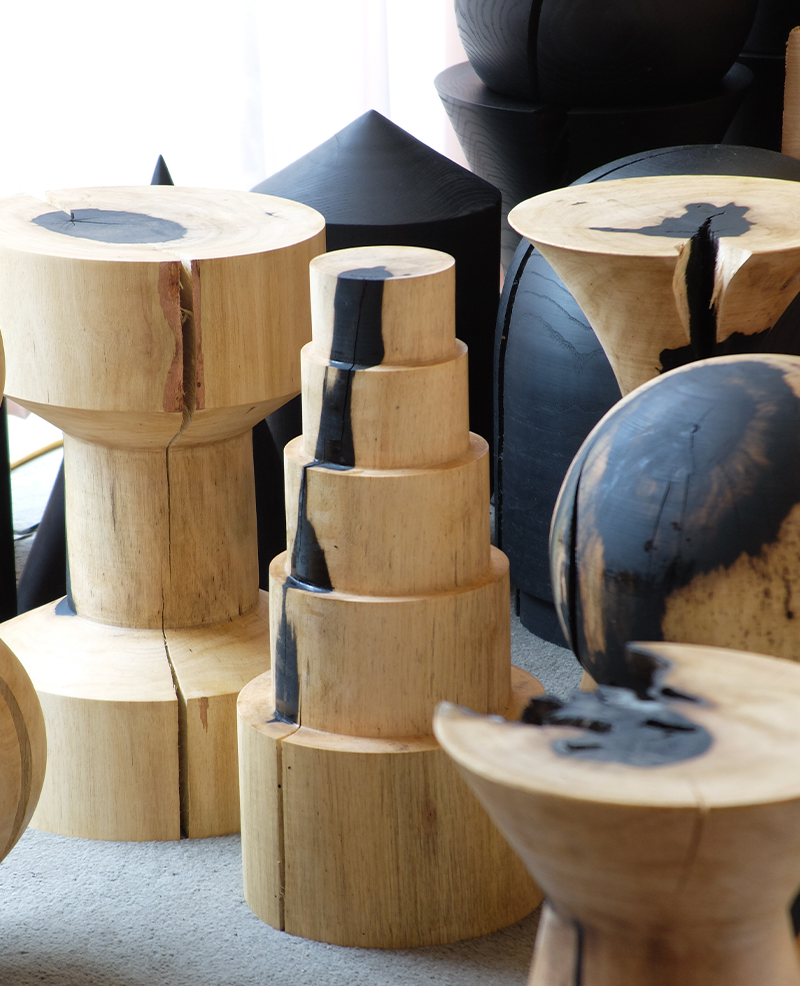 2.
2.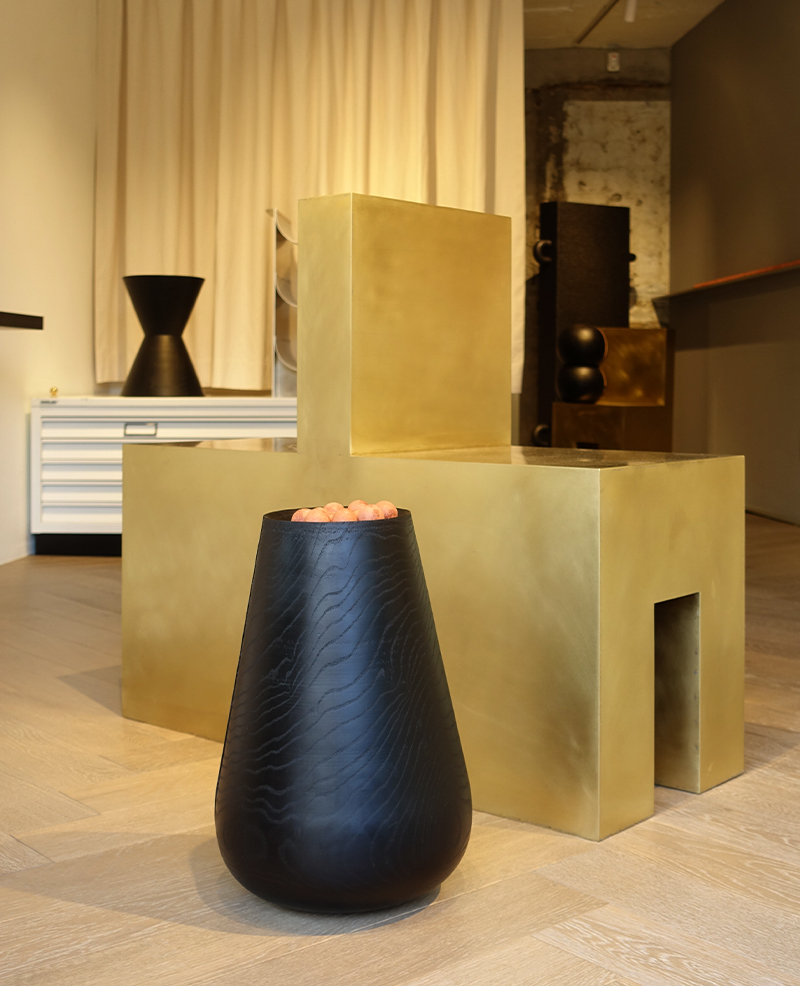 3.
3. 1. 'Noneloquent' project in different types of Korean timber and sponge
1. 'Noneloquent' project in different types of Korean timber and sponge 2. 'Noneloquent' (coloured wood edition) made by using Korean timber 먹감 (meogam) tree
2. 'Noneloquent' (coloured wood edition) made by using Korean timber 먹감 (meogam) tree 3. A few objects from the 'noneloquent' project being used in space
3. A few objects from the 'noneloquent' project being used in space Jungjoo Im
Jungjoo Im Henry Wilson
Henry Wilson 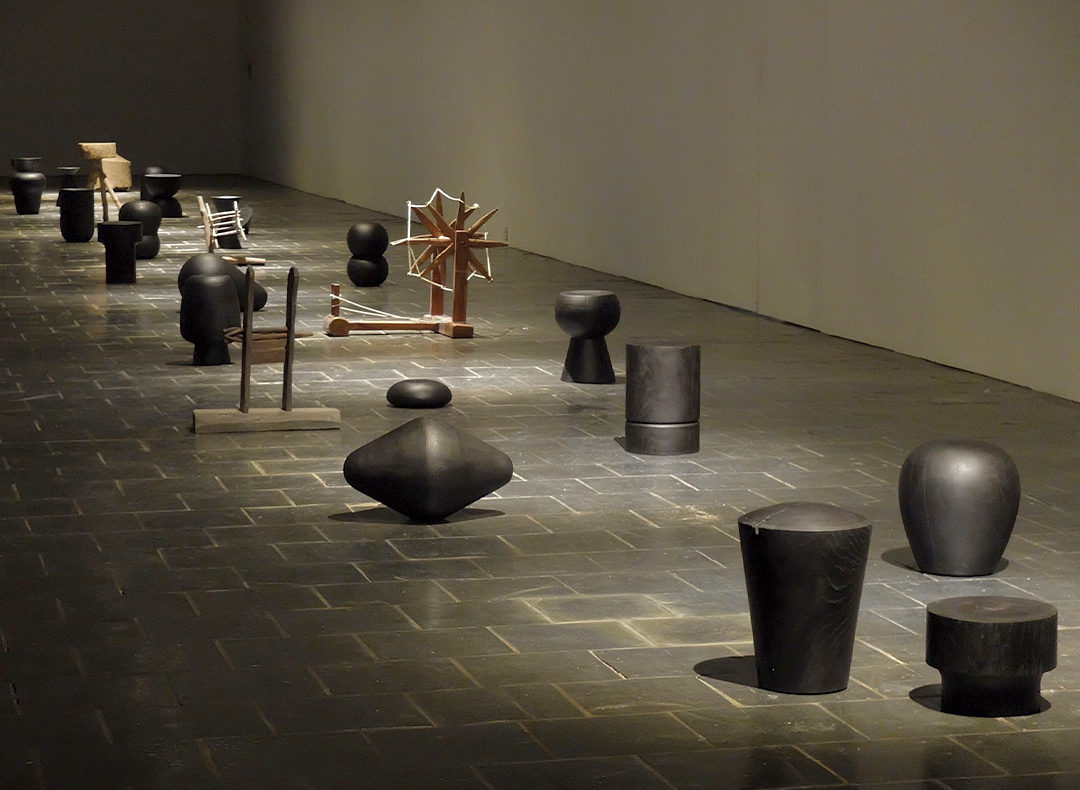 4.
Exhibition at
4.
Exhibition at  5.
One of Noneloquent objects in fiberglass, displayed at Kkotsul (traditional Korean bar)
5.
One of Noneloquent objects in fiberglass, displayed at Kkotsul (traditional Korean bar)
